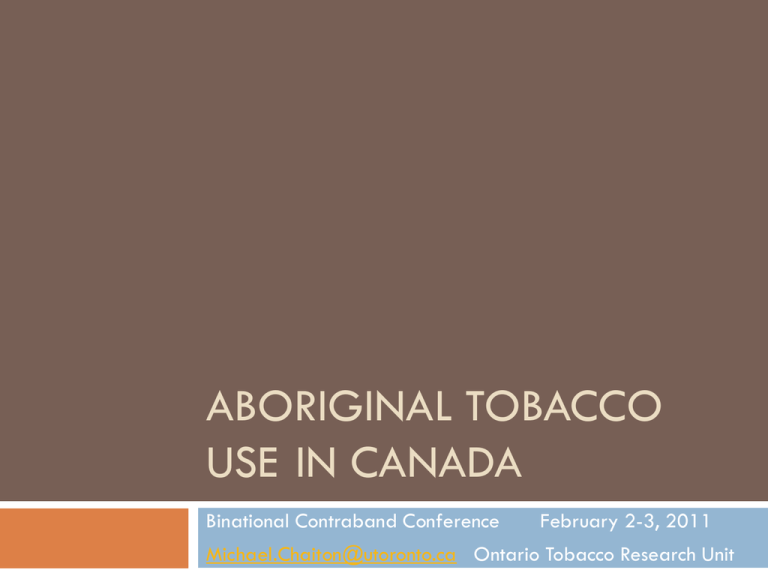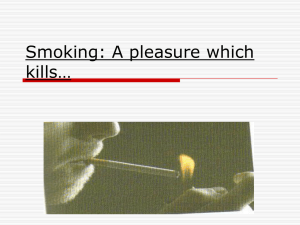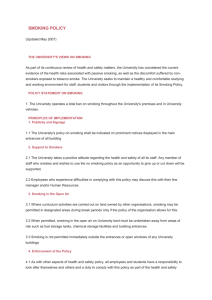Michael Chaiton - A Taxing Issue Public Health and Contraband
advertisement

ABORIGINAL TOBACCO USE IN CANADA Binational Contraband Conference February 2-3, 2011 Michael.Chaiton@utoronto.ca Ontario Tobacco Research Unit Heavy Burden 1.5 times adjusted smokingattributable mortality Source: Wardman & Khan, 2004 Heavy Burden 1 in every 5 deaths Source: Wardman & Khan, 2004 Religious and political institutions Estimates suggest that smoking prevalence was nearly 100% among males Source: Von Gernet, 2000 European practice of smoking was a fundamentally different activity 25 Canadian Male First Nations smokers consume fewer cigarettes per day # Cigarettes Smoked per Day 20.8 19.0 20 15.9 15 14.0 Canadian Female 16.6 15.7 14.0 13.8 12.2 12.8 12.5 11.4 11.2 11.5 10 First Nations Male 15.1 10.2 11.7 10.7 10 7.7 First Nations Female 5 0 0 20 40 Age (in Years) Source: RHS (2002-03), CTUMS (2003) 60 80 80 Arctic Prevalence of Current Smoking 70 60 50 On reserve 40 Off reserve 30 20 Non-First Nations 10 0 1991 2001 Source: Aboriginal Health Survey, CCHS, Environics (2004) 2006 Differences in age and education explain most but not all of the gap in smoking prevalence 80 Arctic Prevalence of Current Smoking 70 60 50 On reserve 40 Off reserve 30 20 Non-First Nations 10 0 1991 2001 Source: Aboriginal Health Survey, CCHS, Environics 2006 7% of quitline callers in Canada are Aboriginal Source: Hayward, 2007 First Nations smokers less willing to use NRT or buproprion Source: Wardman, 2007 Policy intervention Key policy levers not in place on many reserves Lower prices maintain high smoking rates No smoking bans (indoor smoking in public place)











